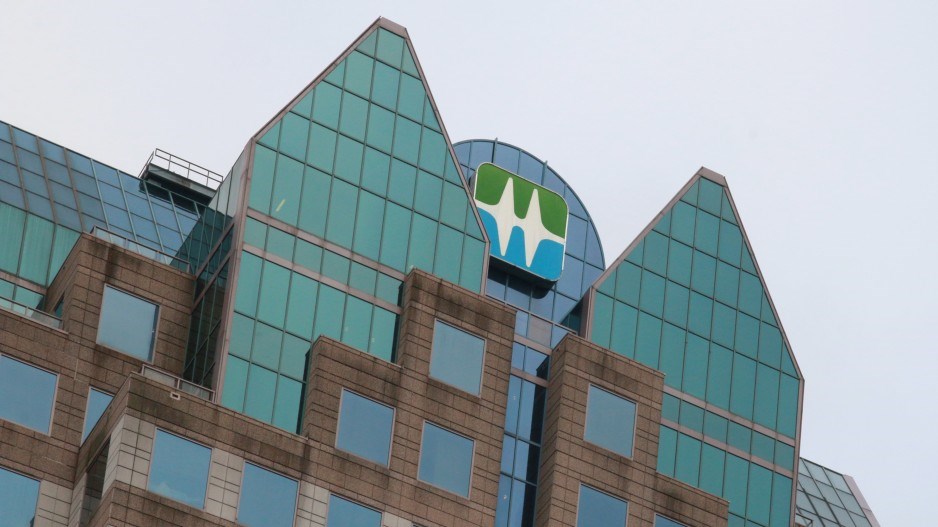BC Hydro’s decision to import $450 million in power last year helped it withstand record demand during this weekend’s extreme cold snap without the threat of rolling blackouts seen in Alberta, says its CEO.
Chris O’Riley said purchasing power when it was cheap in 2023 allowed BC Hydro to save water in its reservoirs during a difficult drought year, which it was then able to draw upon to heat homes during the record arctic weather in recent days.
“When we import energy, say last July, we use that for our load in July and it allows us to keep the water in the dam for later use,” O’Riley said in an interview.
“So on a day like yesterday [Saturday], we use that water we conserved.”
BC Hydro faced criticism last year for importing 10,000 gigawatt hours of electricity, roughly one-fifth of the province’s needs. It was a rare move for a corporation that is usually a net exporter of power.
But it meant Hydro was able to handle a record draw on electricity usage Friday and Saturday that peaked at 11,300 megawatts, as British Columbians turned up the heat to combat record cold.
Not only that, BC Hydro was also able to sell a combined 350 megawatts of power to Alberta, Washington state and Oregon for a premium.
“We had room to manage our system, and help our neighbours,” said O’Riley.
The Alberta government sent out an alert Saturday evening warning people to conserve power to avoid rolling blackouts amidst extreme cold temperatures.
That province hit a record 12,384 megawatts of power usage. Alberta was as much as 200 megawatts away from a blackout, after using all its reserves, according to the Edmonton Journal.
B.C. sold 200 megawatts of hydroelectric power to Alberta, at its peak.
“The Alberta and B.C. systems are almost as different as you could imagine, not just from the generation but the structure,” said O’Riley.
“We have a centrally planned, monopoly, regulated system. They have more of a market system. I think they are going through a pretty big transition there, taking out coal units and replacing it with a mix of renewable and gas. And this was really extreme weather for them, probably more so than ours.
“There’s always a limit to what systems can deliver against, and they weren't able to get through.”
How close did B.C. come to its own limit due to the cold temperatures?
“That’s always a tough question,” said O’Riley. “We weren’t running all of our generating.”
B.C. did not have to activate any emergency natural gas power plants during the coldest moments, such as one on Vancouver Island that is in the middle of phasing out, said O’Riley.
It also did not have to push extra water through its hydroelectric dams.
“With a hydro plant you can run them harder, so you can squeeze more megawatts out of them by putting more water through them — it’s not efficient, but if you need it,” he said.
B.C. suffered a record summer drought, with some forecasters suggesting that drought could roll into next year due to limited fall rain and a small snowpack. That’s part of the reason Hydro imported power last year, said O’Riley.
Buying cheap power during the year let Hydro store as much water as possible in B.C. reservoirs, charging them like batteries, so the company could then draw on that water for its dams during peak periods, while also selling any excess.
“That’s our whole business described in one sentence,” said O’Riley.
“We tend to want to buy energy when it’s cheaper and plentiful, and that exists much of the year. So we time our purchases so we’re not buying it on days like this, because it’s expensive and frankly not available. We have to manage our system, so we have the resources available to meet the load on these peak days.”
Energy Minister Josie Osborne said the weekend highlighted the resilience of the province’s energy grid.
“It shows the strength of having a big hydroelectric system as the backbone of B.C.’s energy system,” she said in an interview. “And it also shows how when more intermittent wind and solar come online we will be able to take advantage of that.”
Despite BC Hydro’s enviable performance compared to Alberta this past weekend, the Crown corporation still faces a challenging future.
Hydro has admitted there it does not have enough power in the future to accommodate the NDP government’s CleanBC plan, which proposes to transition people to electric vehicles and heat pumps, while pushing big industries onto electric power.
Premier David Eby has ordered both a call for additional independent power projects, as well as a review into how BC Hydro can speed up expanding the power grid to get major polluters, like mines and liquefied natural gas plants, onto electricity.
That long-term power shortage has led critics to question whether B.C.’s goal to ban the sale of new gas-powered cars by 2035 is a wise one, or even achievable.
“That does put more demand and pressure on the power system,” said O’Riley. “It’s incumbent on us to be investing in the system and making sure customers are confident in being able to turn on the power when they need it.”
Rob Shaw has spent more than 15 years covering B.C. politics, now reporting for CHEK News and writing for Glacier Media. He is the co-author of the national bestselling book A Matter of Confidence, host of the weekly podcast Political Capital, and a regular guest on CBC Radio.





